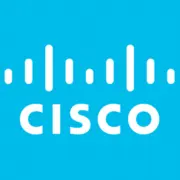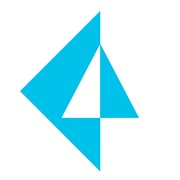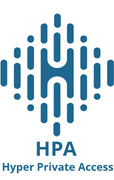
Best Zero Trust Security Solutions Software 2025
What are Zero Trust Security Solutions? Zero Trust Security Solutions offer a comprehensive set of features that provide secure access to IT resources. It protects users, applications, and data from unauthorized access and malicious actors. Zero trust security takes a risk-averse approach to access by assuming that any resource can be compromised, requiring that every user and device be authenticated and authorized before accessing other devices, applications, data, systems, and ...
We’ve collected videos, features, and capabilities below. Take me there.
All Products
Videos for Zero Trust Security Solutions
Learn More about Zero Trust Security Solutions Software
What are Zero Trust Security Solutions?
Zero Trust Security Solutions offer a comprehensive set of features that provide secure access to IT resources. It protects users, applications, and data from unauthorized access and malicious actors. Zero trust security takes a risk-averse approach to access by assuming that any resource can be compromised, requiring that every user and device be authenticated and authorized before accessing other devices, applications, data, systems, and networks.
Vendors offer a variety of approaches including ZTNA (zero trust network access), micro-segmentation, integrated identity and access management, MFA (multi-factor authentication), endpoint security, secure web gateways, remote browser isolation, firewalls, cloud security, network traffic analysis, user and device analytics, and alerts. These solutions are enhanced using threat intelligence data derived from sources such as the Cyber Threat Alliance.
Zero Trust Network Access (ZTNA) solutions, also referred to as a software-defined perimeter (SDP), are used to provide secure access to private applications without allowing users access to enterprise networks. They are often described as a replacement for traditional technologies like VPN, and introduce various methods of authentication to remain identity and context aware of users accessing enterprise applications. ZTNA solutions are available self-hosted, from the cloud and self-managed, or as fully managed services.
With the introduction of cloud-based computing and the ubiquity of devices and resources that can be located anywhere, zero-trust security solutions needed to go beyond traditional perimeter-based security which relied on firewalls that once breached, legitimately or otherwise, allowed broad access to internal resources. The zero trust approach eliminates that single point of failure requiring specific access credentials for every resource behind a firewall. Only after a user’s trust has been established for the requested sessions, devices, data, or applications will access be granted. This approach also addresses the need to prevent threats that originate from internal actors.
Zero trust security solutions embrace the principles of the continuous verification of all resources, limiting the impact when breaches do occur, and gathering and contextualizing all information regarding users, their behavior, and the tech stack to provide the most accurate and robust approach to security concerns.
Zero trust security adaptation has been spurred on by increased remote work, the additional security challenges that cloud-based services, mobile devices, and IoT have introduced, expanded consumer data protection regulations, and high-profile security breaches of government and commercial systems.
Zero Trust Security Solutions Features
Zero trust security solutions will include many of the following features.
- ZTNA – zero trust network access
- Microsegmentation of networks, identities, and devices, to limit the damage if a breach occurs
- Integrated identity and access management
- MFA – multi factor authentication
- Secure web gateways
- Remote browser isolation
- Firewalls
- On-premises, cloud security including Azure, Google Cloud, AWS, and IoT
- Supports Windows, Linux, iOS, Android, macOS clients
- Network traffic analysis
- User and device analytics and alerts
- Encryption
- Secure key management
- One to one user to application, or application to application connections without providing network access
- Custom application security policies
- File system permissions
- Endpoint security
- Shields the visibility of applications and resources
- Automated orchestration of security processes and functions
- Threat intelligence and remediation
- Incident reporting and auditing
- Admin consoles, dashboards, session monitoring
- Compliance and regulatory support
Zero Trust Security Solutions Comparison
When considering zero trust security solutions consider the following.
Groundwork: Before selecting and implementing a zero trust security solution, define the assets and data that you need to protect. Understanding how your network resources interact with each other will determine the best locations to introduce zero trust security controls. Comprehensive and detailed mapping of the devices and data that can be accessed by each user will lay the foundation for a secure environment. Taking a least privilege and least functionality approach to user access will maximize the benefits of your zero trust security solutions.
Standards: Determine that your solution supports the zero trust security measures and guidelines that are outlined in NIST (National Institute of Standards and Technology) SP 800-207, which are applicable for any business, organization, or government entity.
Focus: Zero trust security solution vendors offer a variety of features. Some solutions focus on network access, others on identity and access management. Evaluate which ones best address your security requirements.
Pricing Information
Pricing of zero trust security solutions depends on the features provided, the scale of your operations, and the nature of your tech stack. As zero trust security solutions offer a range of options, and IT infrastructures vary greatly, obtaining a price quote from the vendor is the best approach to understanding its potential costs.
























